
A dynamo is essentially just copper wires spinning between two electromagnets. The more current you put into those magnets, the stronger the field becomes and the more electricity the dynamo generates. When the dynamo is not required, turning down the feed to the magnets turns down the output from the dynamo – this is what the regulator does.
The faster you spin a dynamo the more it outputs, so you have to control the output at higher engine revs. Before regulators came into use, they did this in the 1920s by developing the three-brush dynamo – the two main brushes cope with the charging currents, but the third brush picks up current from the commutator and feeds it to the field windings (magnets). Moving the position of this third brush around the commutator changed how much current it picked up and hence the dynamo’s output. Its position would be selected by putting on all the vehicle’s lights, starting the engine and moving the brush until the ammeter registered about +2amps, meaning you had enough output to power the lights and still feed a couple of amps to the battery.
The downside of this basic arrangement was that the battery was always being charged, whether it was necessary or not. That’s why people were always buying water to top up their batteries because it would boil away. So they put a switch in the live circuit – turn it on and the dynamo would charge the battery, turn it off and the charging would stop. (Cars had magnetos at the time which produced the power needed to run the engine when it was spinning, so they only needed the battery to power and run the ancillaries.)
この記事は Triumph World の October - November 2019 版に掲載されています。
7 日間の Magzter GOLD 無料トライアルを開始して、何千もの厳選されたプレミアム ストーリー、9,000 以上の雑誌や新聞にアクセスしてください。
すでに購読者です ? サインイン
この記事は Triumph World の October - November 2019 版に掲載されています。
7 日間の Magzter GOLD 無料トライアルを開始して、何千もの厳選されたプレミアム ストーリー、9,000 以上の雑誌や新聞にアクセスしてください。
すでに購読者です? サインイン
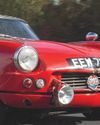
ZIGGY'S NO BANGER!
Good friends Paul Herbert and Chris Harding bought this Mk2 Spitfire in 2014 to use on a Banger Rally. Six years on they’ve still got the Triumph, and it is running better than ever.
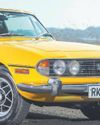
The right choice
In 1978 a Triumph Stag would have been a brave choice as your only car, but after 41 years and getting on for 200,000 miles together, it was clearly the perfect fit for Malcolm and Vera Whitehouse.

THE GREY LADY
In the mid-1930s the New Avon Coachbuilding Co started to build luxury saloons and no longer concentrated on building smaller open sports cars. Phil Homer introduces a luxury product of the era, a six-cylinder Avon on the Standard Flying 16 chassis, and explains why it wasn’t a success.
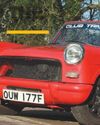
HAROLD THE HERALD
Over the last 20 years, Harold the Herald has been through five distinct phases of development. Now though, with owner Dale Barker going soft and transferring his favours to a big and comfortable saloon, Harold is looking for a new home.
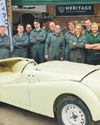
APPRENTICE TR2
History repeats itself as RHP 552 is handed over to apprentices – 64 years after the last time!
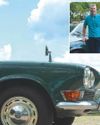
A LASTING PASSION
Lee Godfrey has featured in these pages before, but his enthusiasm for the big Triumphs remains undiminished. Mike Taylor talks to him about the model, his latest example and how the passion started.
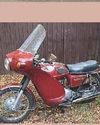
A flurry of activity ends 2019 season
H&H’s last sale of 2019 was at the Buxton Pavilion and offered 127 lots.
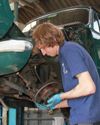
Herald Suspension Overhaul
Thorough investigation turns into a major overhaul and a future-proofed Triumph
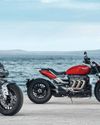
Hotter Rockets Launched For 2020
The world’s largest-capacity volume production motorcycle just got bigger.
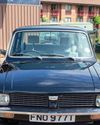
SPECIAL EDITION DOLOMITE 1500
Andrew Burford reckons that a 1500SE represents the epitome of Dolomite design. Mike Taylor meets the man who likes to champion the underdog, and his ultra-rare example of Triumph’s evergreen Dolomite saloon.